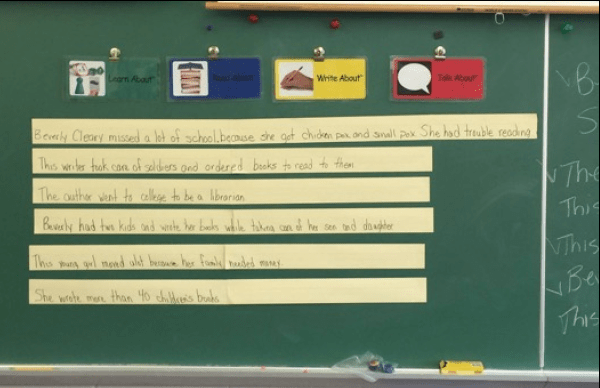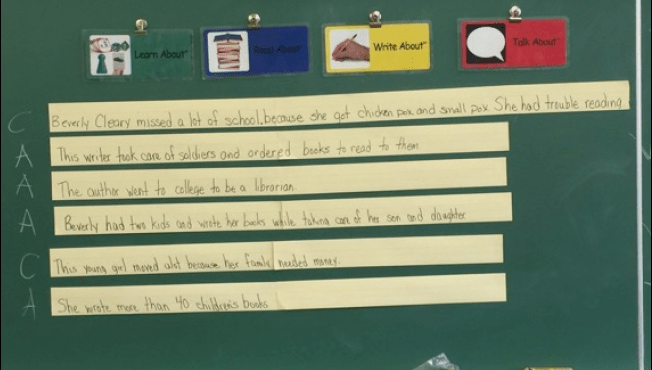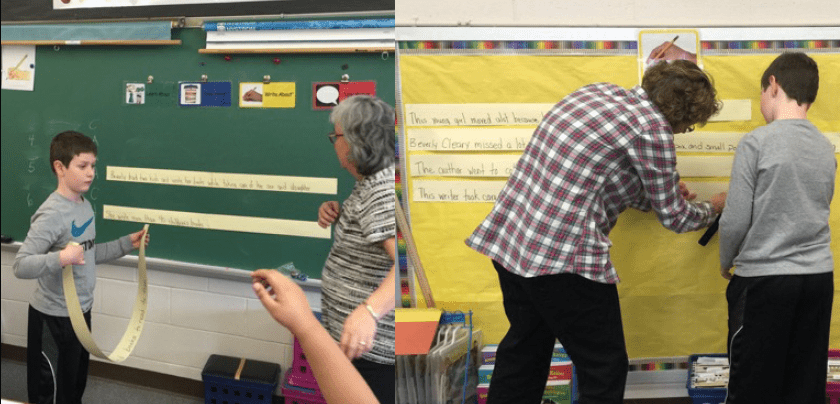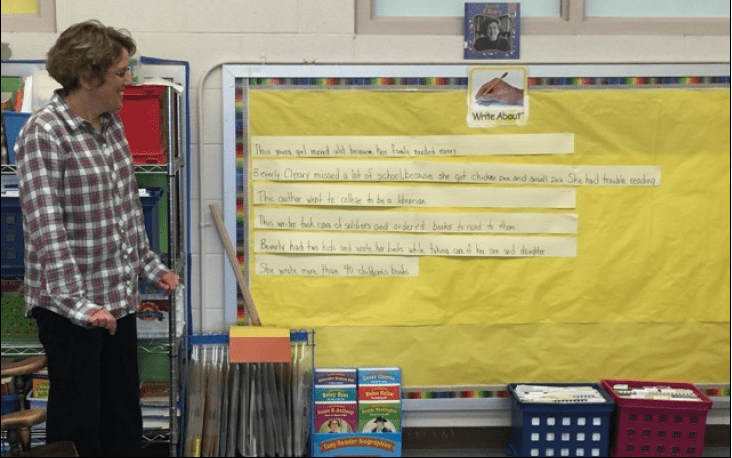

ACTION: “Today, we’re going to write a persuasive essay.”
REACTION: “What does ‘persuasive’ mean?”
ACTION: “Let’s grab an iPad from the cart. Today, we are going to start writing our summary of the biographies we read.”
REACTION: “Where do I start?”
Oftentimes, writing assignments are given with one basic quick model or demo of what is required – sometimes from a basic template form – and then students are asked to get started independently from there. It is the common scenario of, “On your mark, get set, go!”
And we know how that often turns out. Increased reliance on adult support . . . Not every student succeeds . . . Students not really knowing the “roadmap” of their writing task.
To solve these problems, teachers – both in general ed and special ed – are seeing the value of group writing lessons to explicitly teach each individual step of the writing assignment, prior to students engaging in breakout, individual writing sessions.
For example, I co-teach group writing lessons on a regular basis in my mentoring and coaching program for educators. Here was the intro dialogue at the start of one of these group writing lessons:
“Today, we are going to do a group writing lesson. We are going to write about one of the biographies that you learned about and read about. It will have 5 parts. The end result will be a paragraph summary. Let’s review what a ‘biography’ is and post on the board a Learn About Tip to define the term ‘biography.’”

For students of any ability, we need to separate out formulating thoughts of “what to write” from sequencing and organizing them. If all of these tasks are required of students at the same time, the cognitive load is too high. This, in turn, affects not only their desire to engage in writing tasks, but also the ability of the learners to sustain a writing session for a given period of time.
PART 1: Brainstorming a concept map with bullet points on what the students “learned about” & “read about” a biography of Beverly Cleary (an author of children’s and young adult’s fiction).
Students:
– Formulate a bullet point about the topic
– Draw a circle in which to place their thought
– Draw a line to the main idea once the bullet point was entered
– Add the bullet circle at the start of the phrase
– Illustrate an image to represent their thought

PART 2: The class developed a list of words to use as referents for the main idea – in this case, the character, Beverly Cleary – to avoid the overuse of the character’s name in each sentence. Examples the students formulated were:
– This young girl
– This child
– This author
These words were sentence-starter options for students to use to expand each bullet point into a meaningful sentence.
PART 3: The sentences were generated one at a time by the students – in NO PARTICULAR ORDER – from the bullet points on the Write About Concept Map using the referent words. The
sentences were scribed onto yellow sentence strips. As each sentence was formulated, it was place on the board.

PART 4: Now that students have formulated their sentences from their bullet points, it was time to organize the sentences: those sentences that were about Beverly Cleary when she was a child – by marking the letter “C” next to the sentence – and those that represented her life as an adult, marked with the letter “A.”

In addition, the students numbered the sentences in sequence, as they wanted them to appear in their paragraph – first from the “child” category and next from the “adult” category.
PART 5: After that, the students physically placed the sentences they wrote for the biography summary on the Write About classroom board to organize and build – literally – the paragraph.

Each student was engaged in this 45-minute writing lesson. Each student participated. Students were now better prepared for their breakout writing sessions on different biographies that they would select using the strategies we taught them to breakdown their writing assignments.
And, by the way, this lesson format can be used over and over again in group writing lessons so that it is consistent and predictable for the learners – regardless of what they are writing about.
SUCCESS FOR ALL!

Happy spring,
Phyl
